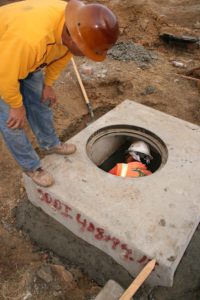 Who doesn’t love a summer BBQ? Come rain or shine we light up our BBQs with usually the only worries being whether it will rain, or the sausages are fully cooked through.
Who doesn’t love a summer BBQ? Come rain or shine we light up our BBQs with usually the only worries being whether it will rain, or the sausages are fully cooked through.
While these are important, (especially making sure the sausages are cooked!) many of us are completely unaware of the potential risks.
Carbon monoxide is a gas that has received its fair share of publicity with many of us installing detectors in our homes and businesses, but completely unaware carbon monoxide is associated with our BBQs.
If the weather is poor, we may decide to barbeque in the garage doorway or under a tent or canopy. Some of us may even bring our BBQs into the tent after use. These can all be potentially fatal as the carbon monoxide collects in these confined areas.
Equally with a propane or butane gas canister, we store in our garages, sheds and even our homes unaware that there is a risk of a potentially deadly combination of an enclosed space, a gas leak and a spark from an electrical device. All of which could cause an explosion.
All of that said, BBQs are here to stay and if we use them safely, are a great way to spend a summer afternoon. So, here is a selection of facts and tips from our safety team at Crowcon which we hope will help you enjoy a safe and delicious summer ahead!
Quick facts and tips about BBQ charcoals:
- Carbon monoxide is a colourless and odourless gas so just because we can’t smell or see it, doesn’t mean it’s not there
- Carbon monoxide is a by-product of burning fossil fuels, which include charcoal and BBQ gas
- Always use your BBQ in a well-ventilated open area as it can accumulate to toxic levels in enclosed spaces
- Never bring a charcoal into a tent, even if it seems cold. Remember a smouldering BBQ will still give off carbon monoxide
- Be aware and act quickly if someone experiences the symptoms of carbon monoxide poisoning which include headaches, dizziness, breathlessness, nausea, confusion, collapse and unconsciousness. These symptoms can be potentially fatal
Quick facts and tips about gas cannisters:
- Gas barbecues tend to use propane, butane or LPG (which is a mixture of the two)
- Gas BBQs have holes in the bottom to prevent a build-up of gas. This is because gas is heavier than air so will accumulate in low areas or fill a space from the bottom up
- To avoid the accumulation of gas, cannisters should always be stored outside, upright, in a well-ventilated area, away from heat sources, and away from enclosed low spaces
- If you store your BBQ in the garage, make sure you disconnect the gas cannister and keep this outside
- When you are using your BBQ, keep the cannister to one side so it isn’t underneath and close to the heat source and position the BBQ in an open space
- Always keep the cannister away from ignition sources when changing cannisters
- Always make sure you turn off the gas at the BBQ as well as on the regulator on the cannister, after use



 Working in the office makes it easy to focus on the individual tasks and get detached from how our products are making a difference to people’s lives. One of our customers was kind enough to facilitate an onsite visit so that Andrea (our Halma Future Leader on a marketing placement) could see first-hand how our products are used and who the end users are. This meant a visit to an oil refinery to see where our Crowcon portable gas detectors are used.
Working in the office makes it easy to focus on the individual tasks and get detached from how our products are making a difference to people’s lives. One of our customers was kind enough to facilitate an onsite visit so that Andrea (our Halma Future Leader on a marketing placement) could see first-hand how our products are used and who the end users are. This meant a visit to an oil refinery to see where our Crowcon portable gas detectors are used. Directive and National Standards
Directive and National Standards
 We’re always looking at recruiting apprentices and graduate engineers to support in achieving recognised qualifications from NVQs at Level 2 to BTECs, HNC and in some disciplines, such as finance or purchasing, post graduate or professional certificates.
We’re always looking at recruiting apprentices and graduate engineers to support in achieving recognised qualifications from NVQs at Level 2 to BTECs, HNC and in some disciplines, such as finance or purchasing, post graduate or professional certificates.

